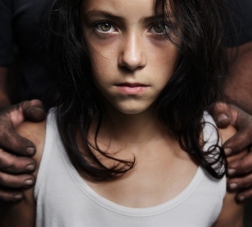-
Drug Adiction
Jun 5, 2023 | 10:00Substance dependence, commonly called drug addiction, is a drug user's compulsive need to use controlled substances in order to function normally. When such substances are unobtainable, the user suffers from substance withdrawal.[1] The section about substance dependence in the Diagnostic and Statistical Manual of Mental Disorders (more specifically, the 2000 "text revision", the DSM-IV-TR) does not use the word addiction at all. It explains: When an individual persists in use of alcohol or other drugs despite problems related to use of the substance, substance dependence may be diagnosed. Compulsive and repetitive use may result in tolerance to the effect of the drug and withdrawal symptoms when use is reduced or stopped. This, along with Substance abuse are considered Substance Use Disorders....[2]
Read More -
Sexual Abuse
Jun 5, 2012 | 10:08Sexual abuse, also referred to as molestation, is the forcing of undesired sexual behavior by one person upon another. When that force is immediate, of short duration, or infrequent, it is called sexual assault. The offender is referred to as a sexual abuser or (often pejoratively) molester.[1] The term also covers any behavior by any adult towards a child to stimulate either the adult or child sexually. When the victim is younger than the age of consent, it is referred to as child sexual abuse.
Child sexual abuse is a form of child abuse in which a child is abused for the sexual gratification of an adult or older adolescent. In addition to direct sexual contact, child sexual abuse also occurs when an adult engages in indecent exposer (of the genitals, female nipples, etc.) to a child with intent to gratify their own sexual desires or to intimidate or groom the child, asks or pressures a child to engage in sexual activities, displays pornography to a child, or uses a child to produce child pornography.[10][12][13] Effects of child sexual abuse include guilt and self-blame, flashbacks, nightmares, insomnia, fear of things associated with the abuse (including objects, smells, places, doctor's visits, etc.), self-esteem issues, sexual dysfunction, chronic pain, addiction, self-injury, suicidal ideation, somatic complaints, depression,[14] post-traumatic stress disorder,[15] anxiety,[16] other mental illnesses (including borderline personality disorder)[17] propensity to re-victimization in adulthood,[18] and physical injury to the child, among other problems.[19] Victims of child sex abuse are over six times more likely to attempt suicide[20] and eight times more likely to repeatedly attempt suicide.[20] The abusers are also more likely to commit suicide. Much of the harm caused to victims becomes apparent years after the abuse happens. Sexual abuse by a family member is a form of incest, and results in more serious and long-term psychological trauma, especially in the case of parental incest. Approximately 15% to 25% of women and 5% to 15% of men were sexually abused when they were children.Most sexual abuse offenders are acquainted with their victims; approximately 30% are relatives of the child, most often fathers, uncles or cousins; around 60% are other acquaintances such as friends of the family, babysitters, or neighbors; strangers are the offenders in approximately 10% of child sexual abuse cases. Most child sexual abuse is committed by men; women commit approximately 14% of offenses reported against boys and 6% of offenses reported against girls.[22] Most offenders who abuse pre-pubescent children are pedophiles;[27][28] however, a small percentage do not meet the diagnostic criteria for pedophilia.[29]
Read More -
Mental Illness
Jun 5, 2023 | 10:00Jump to: navigation, search "Mental disability" redirects here. For other uses, see Cognitive disability. "Emotional disability" redirects here. For other uses, see Emotional and/or behavioral disability. Mental disorder Classification and external resources Eight women representing prominent mental diagnoses in the 19th century. (Armand Gautier) ICD-10 F99 MeSH D001523 A mental disorder or mental illness is a psychological pattern or anomaly, potentially reflected in behavior, that is generally associated with distress or disability, and which is not considered part of normal development of a person's culture. Mental disorders are generally defined by a combination of how a person feels, acts, thinks or perceives. This may be associated with particular regions or functions of the brain or rest of the nervous system, often in a social context. The recognition and understanding of mental health conditions have changed over time and across cultures and there are still variations in definition, assessment and classification, although standard guideline criteria are widely used. In many cases, there appears to be a continuum between mental health and mental illness, making diagnosis complex.[1] According to the World Health Organisation (WHO), over a third of people in most countries report problems at some time in their life which meet criteria for diagnosis of one or more of the common types of mental disorder.[2] The causes of mental disorders are varied and in some cases unclear, and theories may incorporate findings from a range of fields. Services are based in psychiatric hospitals or in the community, and assessments are carried out by psychiatrists, clinical psychologists and clinical social workers, using various methods but often relying on observation and questioning. Clinical treatments are provided by various mental health professionals. Psychotherapy and psychiatric medication are two major treatment options, as are social interventions, peer support and self-help. In a minority of cases there might be involuntary detention or involuntary treatment, where legislation allows. Stigma and discrimination can add to the suffering and disability associated with mental disorders (or with being diagnosed or judged as having a mental disorder), leading to various social movements attempting to increase understanding and challenge social exclusion. Prevention is now appearing in some mental health strategies.
Read More



